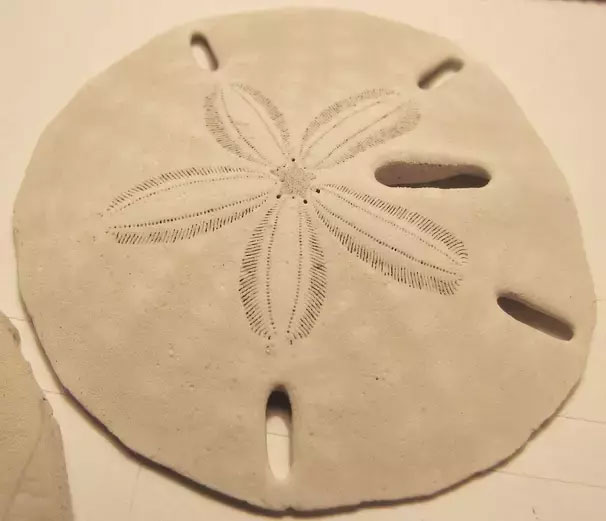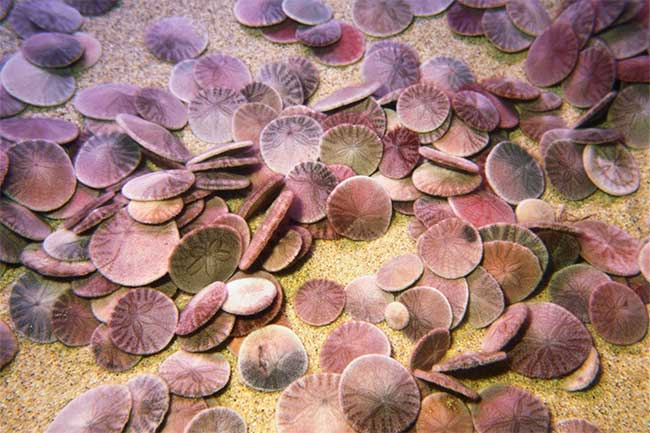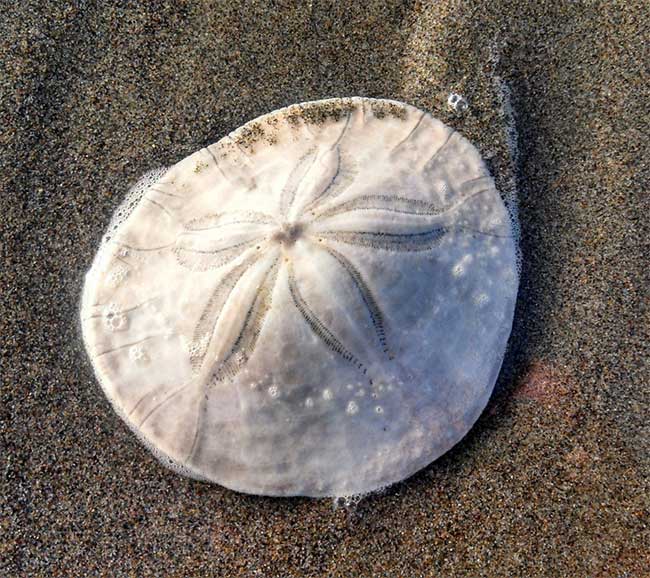Sand Dollar, at first glance, may sound like an ancient form of trade, but in reality, it refers to a fascinating marine creature with many interesting facts.
What is a Sand Dollar?
A Sand Dollar is a term used to describe a marine organism related to sea urchins, characterized by its round, coin-like shape. When people think of sea urchins, they often envision a spiky, intimidating creature living on the ocean floor, but few realize that sea urchins come in various shapes and sizes. These animals are covered in spines and crawl along the seabed, feeding on small crustaceans and algae, with each “dollar” hiding beneath the sand.

Dried Sand Dollar.
The Sand Dollar is a subclass of sea urchins scientifically known as Clypeasteroida. This round, extremely flat creature is closely related to sea cucumbers and starfish. Its unusual appearance has captivated humans for centuries whenever it washes ashore.
Beyond its intriguing name, the Sand Dollar is also referred to as sea cookie. The name Sand Dollar, easy to remember, originated centuries ago when early explorers discovered these unusual “stones” on the beach. They are round and resemble coins. Some even believed they were a form of currency used by underwater creatures, possibly including mermaids from the legendary city of Atlantis.
They typically have a diameter of 8 to 10 cm, though some species can be smaller. Beneath their fleshy exterior and spiny skin lies a very sturdy skeleton, flat and round like a turtle shell.

Colorful Sand Dollars living in groups of hundreds under the sea.
Sand Dollars have a hard outer shell covered in many layers of fine hair-like fibers. This complex structure allows Sand Dollars to easily navigate the ocean floor in search of food.
Sand Dollars tend to burrow themselves just below or on sandy, muddy areas. To determine the exact age of a Sand Dollar, you can look at the rings on the underside of its shell, similar to counting the rings of a tree. On average, Sand Dollars live for 7 to 10 years.
The patterns on a Sand Dollar’s shell form a symmetrical five-petal flower shape. These are the locations of the pores on the shell, allowing for the necessary gas exchange for survival.
However, when Sand Dollars die, they cannot maintain their position and are easily washed ashore by the tide.
The most commonly seen are the blue, azure-colored individuals, but they can also be found in shades of pink, brown, yellow, purple, green, white, gray, and they all have a smooth, velvety texture.
Sunlight will bleach the Sand Dollar’s shell until it is almost entirely white.
When dry, it resembles a starfish resting atop a pristine white rock. With its beautiful appearance, the Sand Dollar makes an interesting gift for loved ones whenever you visit the beach.
Interesting Facts About Sand Dollars

Sand Dollars are known to be slow eaters.
Although you may find many similar Sand Dollars on the beach, in reality, there are dozens of different species of Sand Dollars worldwide. Nevertheless, they share many interesting common traits.
Due to their lightweight bodies, Sand Dollars often struggle to anchor themselves against strong currents. Their lightness also leads them to cluster together, forming groups of hundreds of Sand Dollars that move collectively in search of fertile feeding grounds.
Sand Dollars are notoriously slow eaters. They typically take over two days to fully consume their food.
Sand Dollars reproduce similarly to most organisms. They release eggs and sperm into the water in the same area, allowing fertilization to occur randomly.
Exposed to sunlight and preyed upon by many seagulls, they gradually become just a strange skeleton, attracting countless tourists. To this day, coastal communities continue to use Sand Dollars to boost tourism. Locals often craft them into earrings, bracelets, and necklaces, coloring and painting designs on the shells to create beautiful, vibrant flowers.
When swimming at the beach, especially in the Atlantic, Pacific, and Caribbean regions, if you want to find a “dollar” on the sand, walk along the shores during low tide and look for shiny, ivory-colored objects that may sparkle in the sunlight.
If you’re lucky, you might find a round, pretty piece buried in the sand, resembling a shell but worth much more. It is like white coral that can sell for a good price, just as its name suggests: “Dollar” on the sand.

















































